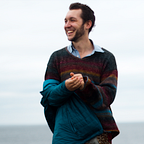World Salmon Day: A Welfare Perspective
The 8th of October marked the fifth annual ‘World Salmon Day’. This holiday was proposed by the food brand ‘Chicken of the Sea’ in 2015 to highlight the dietary benefits of the popular fish, in the hope that it would lead to “a long-term increase in [the public’s] heart and nutritional health.”
The heart of the public has been moved by salmon over the past five years, but perhaps not in the way that Chicken of the Sea would have expected. There is an increasing public ethical concern around fish suffering: over the past five years, fish welfare projects have been launched by Compassion in World Farming, Animal Equality, VICE, Anima International, Mercy for Animals, the Humane Slaughter Association, and the Humane League. The RSPCA recently announced the development of a ‘welfare outcome assessment’, a rubric used by on-farm inspectors to determine how welfare can be improved on a farm-by-farm basis.
Economically speaking, the golden age of salmon is still dawning. Salmon is the most valuable fish in the world, with a harvest of 2.2 million tonnes of salmon (approximately 1 billion head of fish) producing 12 billion pounds of fish annually. The global growth of middle-class diets and the developing taste for fileted fish in emerging markets means that salmon sales are unlikely to slow over the next decade. However, we are past the peak of treating welfare as an externality to the costs of salmon farming. Consumers are increasingly demanding an increase in the ethical quality of the meat they consume: A recent study by the RSPCA found that 39% of British people are reducing the amount of meat they eat, aiming to eat “less but better” animal products.
This new class of consumers, termed ‘Reduceatarians’, have an increasing focus on the welfare of the fish they eat: A study commissioned by the University of Paraná found that 75.8% of respondents believed fish are sentient beings, which arecapable of having both positive and negative qualitative experiences. Teleost fish, the infraclass to which salmon belong, have been shown to exhibit memory, develop traditions, and learn pavlovian responses to sound three times faster than rats.
As a result of this, salmon producers should expect increasing pressure from consumers and legislators to provide ethical salmon to increase over the coming years.
While some issues, such as sea larvae and escapees, seem dauntingly expensive and complicated to solve, there are several cost-effective (even cost-reducing) ways to increase the ethical quality of salmon production. These have the potential to be win-wins, increasing the marketability of salmon for distributors while simultaneously reducing costs for producers.
Early evidence suggests that the complexification of the salmon’s environment can increase both profitability and key welfare metrics. Providing a gravel substrate in the tank increases the survivability of salmon in the alevin stage, at minimal cost. Appropriate sheltering structures, including tank covers, can encourage more consistent growth of the salmon, reducing aggression between conspecifics. Even interventions as simple as painting the tank blue, to emulate the natural environment of fishes, have been shown to reduce stress levels in certain species of finfish.
Another important factor on the horizon for reducetarians is the impact of Fish Meal & Fish Oil (FMFO) — salmon are fed an improved feed mix, which contains wild-caught fish. As Salmonids are the only obligate carnivores that are routinely farmed, there is growing concern around fish consumed in their production: The Aquatic Life Institute estimates that around 750 billion fish, roughly one-third of all caught fish, are fed to farmed fish every year. Each salmon eats the biomass equivalent to 147 anchovies of FMFO to be brought to harvest weight. Growing consumer concern over this pyramid of welfare issues means that the pressure is on for producers to adopt lower-impact proteins in their feed.
Environmental Enrichment and alternative proteins appear to be the most cost-effective ways to improve salmon welfare while also taking pressure off the bottom line for farmers. What better way is there to celebrate world salmon day than looking ahead, and improving the long-term prospects of the industry?
Mark Borthwick is director of research at the Aquatic Life Institute, a young organization that aims to transform how we eat, farm, and care for aquatic animals.
